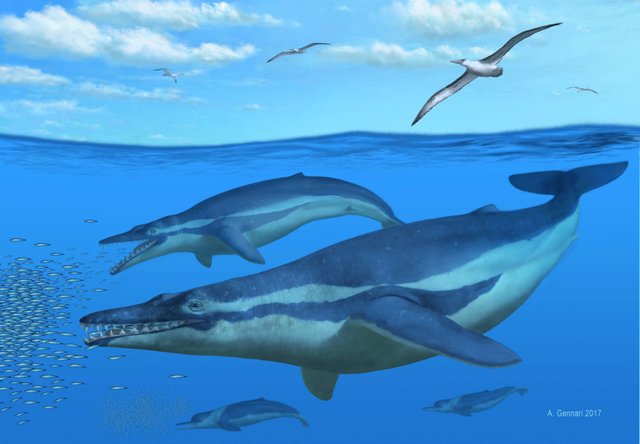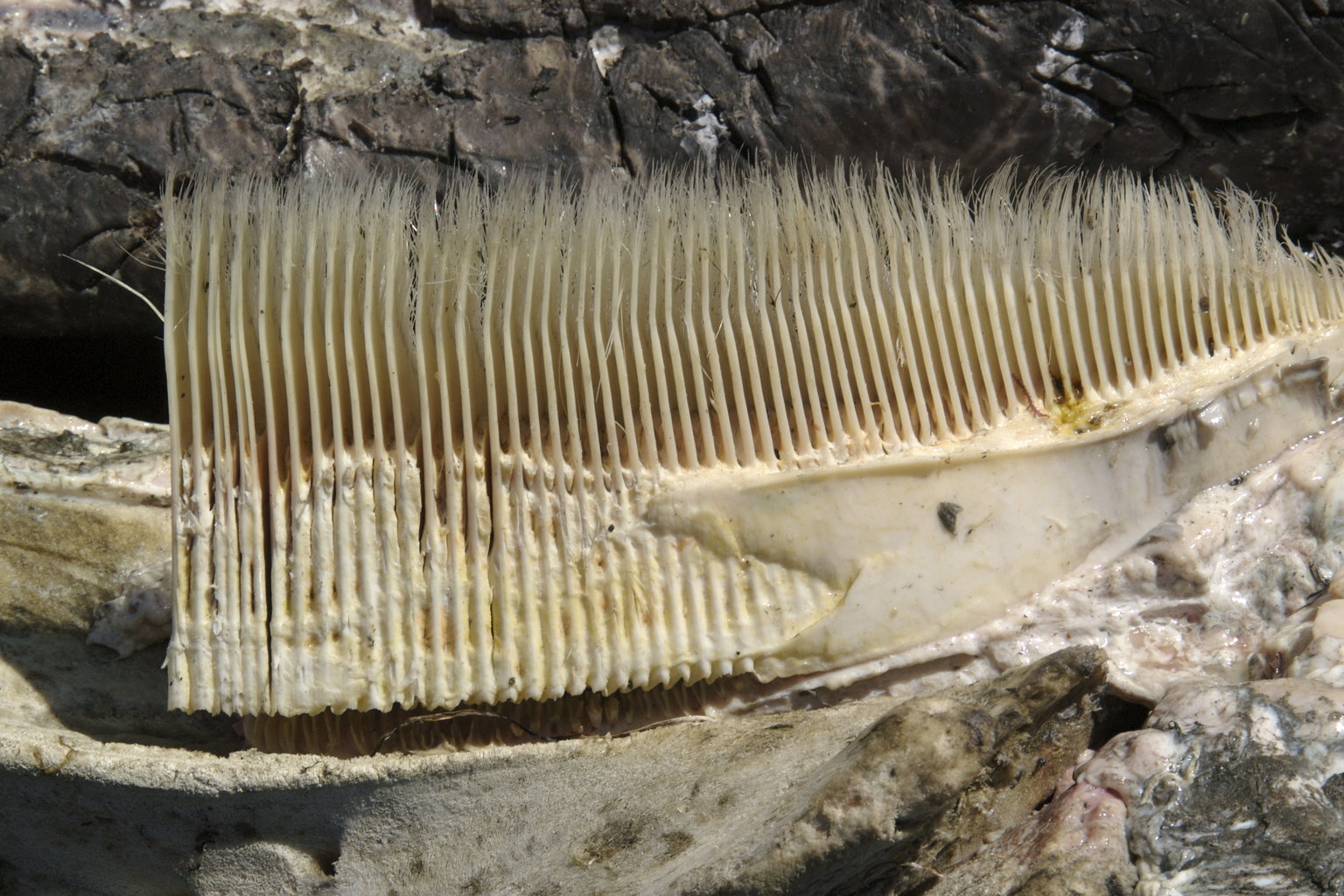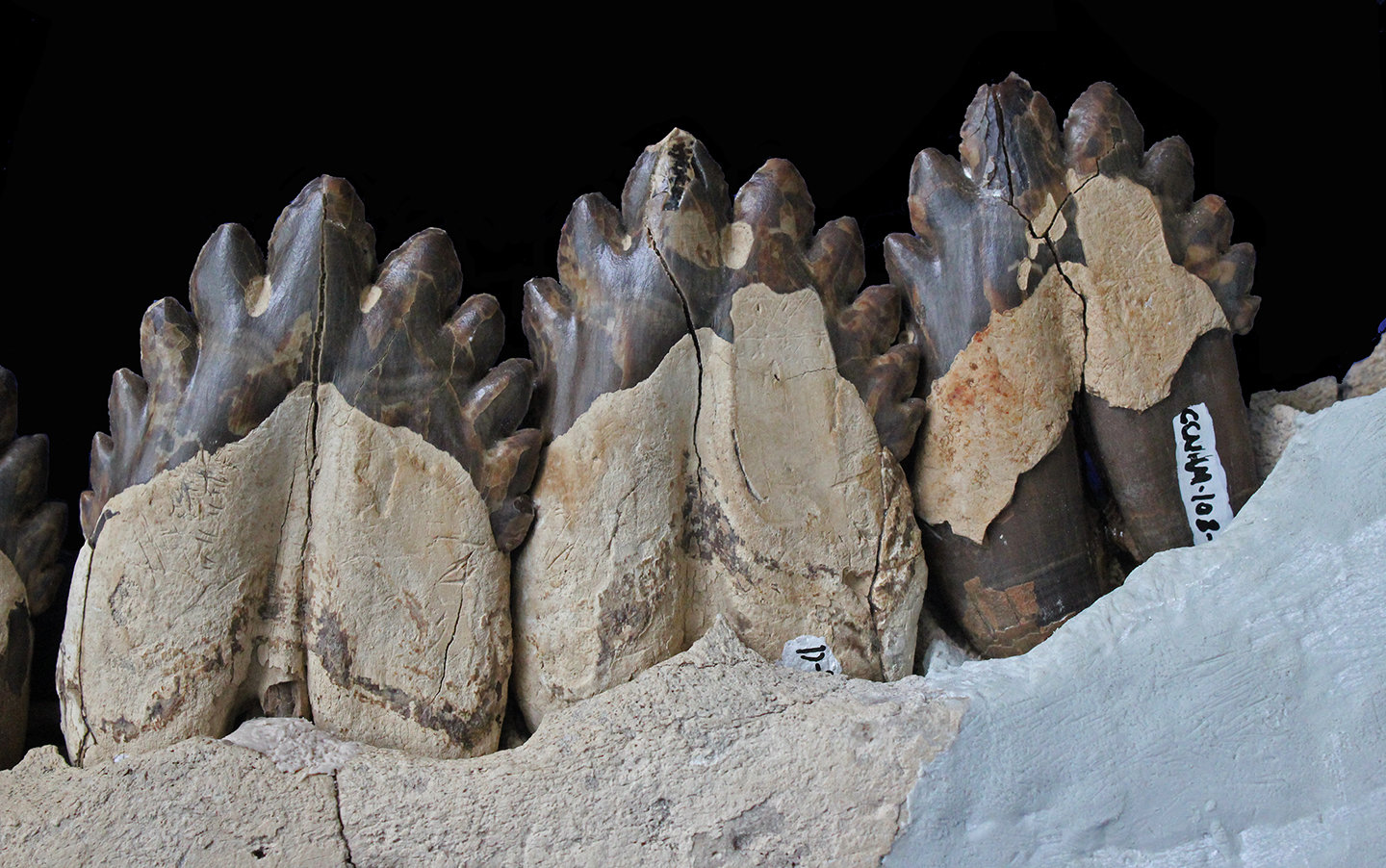Ancient Gap-Toothed Whale Led to Evolution of Efficient Filter Feeding

Geologist Mark Havenstein has always had a knack for finding rare, important fossils. As a child, he found a tooth for the largest shark that ever lived — megalodon — on a beach in Spain. Over the years, Havenstein continued to collect fossils, eventually donating his private collection to the College of Charleston and starting the business Lowcountry Geologic. Those efforts only foreshadowed what may be his most noteworthy discovery yet.
While scuba diving in South Carolina's Wando River looking for shark teeth, Havenstein found the remains of a fossilized whale. A new study on the remains, published in the journal Current Biology, determined that the whale lived 30 million years ago. Named Coronodon havensteini in honor of Havenstein, the new fossil species helps to explain the unusual eating habits of its living relative, the blue whale, which at 98 feet in length and weighing up to 200 tons is the largest known animal to have ever existed.
Blue whales use a filter-feeding system called baleen to strain huge volumes of saltwater, leaving only krill and small organisms behind.
"Some modern baleen whales catch around 1,000 kilograms (2,200 pounds) of tiny prey in a single day," lead author Jonathan Geisler of the New York Institute of Technology College of Osteopathic Medicine said. "Larger prey come in lower densities, so there is no way a whale could catch enough larger prey to sustain its large size."
A terrestrial animal analogue is the anteater. Some anteater species grow to about 4 feet long, and yet they preferentially feast on tiny ants due to the prevalence of these insects.
The baleen system consists of plates that look like Venetian blinds with multiple hairy fringes forming the "slats." Scientists have long debated how the system evolved. Some suspect the first baleen whales were toothless suction feeders, while others theorize early whales used their teeth like a sieve to filter prey out of water. Coronodon havensteini strengthens evidence for the latter view.
RELATED: Success Story: Blue Whale Population Rebounds
Get the world’s most fascinating discoveries delivered straight to your inbox.
One of the whale's most distinctive features was its big back teeth, which had noticeable ridged spaces between them.
"Coronodon would approach a concentrated school of fish — often called a bait ball — and would open its mouth wide while swimming rapidly forward," Geisler said. "After it started to emerge on the other side of the school of fish, it would close its jaws. As the mouth was closed, water would be pushed out of the mouth through the slots between the teeth whereas fish would have been trapped inside."
He added, "We speculate that the tongue would have been positioned to prevent fish from escaping out of the front of the mouth while it closed."
As for how the heavily spaced teeth evolved in the first place, the researchers think prey size drove the alignment. This perhaps followed the Goldilocks principle, based on the children's story The Three Bears, where a little girl named Goldilocks thought one bowl of porridge was just right, while others were either too hot or too cold.
In this case, if the spaces between the whale’s teeth were too large, prey could have escaped. If they were too narrow, however, then water and prey might have been forced through another wider space when the mouth was closed. An ideal medium between these two extremes seemed to be favored.
"The large teeth (in Corondon) also blocked parts of the sides of the mouth, so they initially might have helped to keep prey inside the mouth while the jaw was closing," Geisler said.
Geisler and colleagues Robert Boessenecker, Mace Brown, and Brian Beatty suspect that over time the spacing between the whale's teeth became filled with baleen hair. As filter-feeding continued to evolve over millions of years, the baleen got longer, the teeth became smaller, and the former spaces decreased.
In ancient whales of the lineage, teeth might have first helped with grabbing prey, but then were recruited for filtering before evolving into the baleen. The overall gradual process of change fits within a broader pattern showing how body parts that evolve for one function are later co-opted for another use. Another example are the feathers of birds. Many paleontologists think that feathers first evolved for insulation, but then were later recruited for visual signaling and flight.
"Baleen is really strange, and if one only looks at living species, it is hard to envision how one would go from a toothed predator to a filter-feeding whale," Geisler said. "Coronodon shows that teeth can be functional equivalents to baleen; not as effective but performing a similar role. Since baleen whales evolved from toothed whales, then teeth could form a bridge between whales that used their sharp teeth to snag prey and later toothless whales that had baleen."
RELATED: Whales Only Recently Evolved Into Giants
Although the feeding system is very efficient, it comes with costs. The researchers said blue whale calves, and the calves of many other whales, grow at incredibly fast rates. The calves' suckling therefore puts a major strain on a mother. As such, a whale mom typically has one calf at a time after a long gestation period.
"With a relatively long life and few offspring," Geisler said, "whales have a difficult time recovering from population crashes, like those that occurred during whaling."
Originally published on Seeker.





